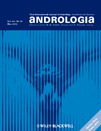Biochemical identification and characterisation of changes associated with capacitation of mannosylated glycoproteins in murine sperm
Summary
The development of a sperm normally ends in the female reproductive track through an extra-testicular maturation process termed capacitation. Previous studies in several mammalian species have revealed the presence of glycoconjugates and their capacitation-correlated changes in localisation. In this study, we used Lens culinaris agglutinin (LCA) to characterise mannosylated glycoconjugates in mouse sperm and their changes in distribution associated with capacitation. In freshly isolated sperm, three biochemically distinct sperm populations (type I, II and III) with specific LCA labelling were noted. Prior to capacitation, glycosylated materials were detected in the head region and approximately 26%, 65% and 9% of sperm displayed each distribution pattern. Following capacitation, the distribution pattern of these mannosylated constituents was not altered; however, re-localisation of these components was observed because the percentage of sperm exhibiting type I and III pattern was significantly changed. Finally, thirteen mannosylated glycoproteins were detected in murine sperm and our lectin blot data confirm that their redistribution instead of proteolytic degradation is mainly responsible for cellular dynamics we observed in murine sperm head associated with capacitation. In conclusion, this study is the first to describe the biochemical identification of LCA-binding glycoproteins present in mammalian sperm, which undergo redistribution as they mature to acquire their full fertilising ability.




